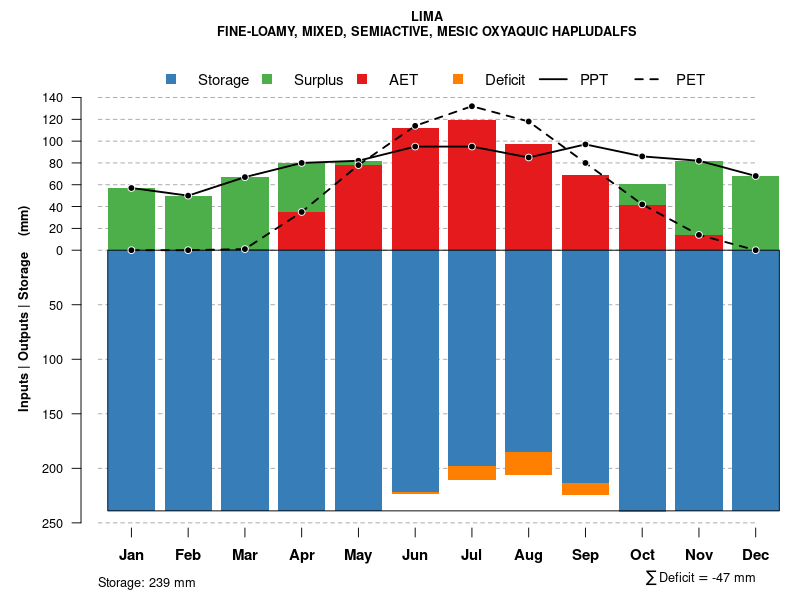| Lima silt loam, 0 to 3 percent slopes | LtA | 22293 | 289443 | 2w3kh | ny011 | 1968 | 1:15840 |
Lima silt loam, 3 to 8 percent slopes | LtB | 18390 | 289444 | 2w3kk | ny011 | 1968 | 1:15840 |
Lima loam, 3 to 8 percent slopes | LmB | 3344 | 290843 | 2w3kf | ny029 | 1979 | 1:15840 |
Lima loam, 0 to 3 percent slopes | LmA | 3277 | 290842 | 2w3jv | ny029 | 1979 | 1:15840 |
Urban land-Lima complex, 1 to 6 percent slopes | UrA | 3000 | 290918 | 2w3k1 | ny029 | 1979 | 1:15840 |
Lima silt loam, 3 to 8 percent slopes | LmB | 11123 | 301730 | 2w3kk | ny037 | 2004 | 1:24000 |
Lima silt loam, 0 to 3 percent slopes | LmA | 8510 | 301729 | 2w3kh | ny037 | 2004 | 1:24000 |
Lima silt loam, 3 to 8 percent slopes | LoB | 6875 | 2518360 | 2w3kk | ny043 | 2018 | 1:24000 |
Lima silt loam, 0 to 3 percent slopes | LoA | 1579 | 2518359 | 2w3kh | ny043 | 2018 | 1:24000 |
Lima silt loam, 8 to 15 percent slopes | LoC | 1325 | 2518361 | 2w3km | ny043 | 2018 | 1:24000 |
Lima loam, 3 to 8 percent slopes | 59B | 10241 | 3105689 | 2w3kf | ny051 | 2019 | 1:24000 |
Lima-Kendaia complex, 3 to 8 percent slopes | 159B | 8877 | 3105747 | 2y9xn | ny051 | 2019 | 1:24000 |
Lima-Kendaia complex, 0 to 3 percent slopes | 159A | 7236 | 3105746 | 2y9xm | ny051 | 2019 | 1:24000 |
Lima loam, 0 to 3 percent slopes | 59A | 3207 | 3105688 | 2w3jv | ny051 | 2019 | 1:24000 |
Lima silt loam, 3 to 8 percent slopes | LtB | 7741 | 292586 | 2w3kk | ny053 | 1975 | 1:15840 |
Lima silt loam, 0 to 3 percent slopes | LtA | 1280 | 292585 | 2w3kh | ny053 | 1975 | 1:15840 |
Lima silt loam, 5 to 15 percent slopes, very stony | LuC | 709 | 292588 | 2w3kl | ny053 | 1975 | 1:15840 |
Lima silt loam, 8 to 15 percent slopes | LtC | 512 | 292587 | 2w3km | ny053 | 1975 | 1:15840 |
Lima and Cazenovia soils, 0 to 6 percent slopes, bedrock substratum phase | LoB | 4937 | 292723 | 2w3kg | ny055 | 1967 | 1:15840 |
Lima silt loam, 0 to 3 percent slopes | LnA | 1831 | 292721 | 2w3kh | ny055 | 1967 | 1:15840 |
Lima silt loam, 3 to 8 percent slopes | LnB | 1110 | 292722 | 2w3kk | ny055 | 1967 | 1:15840 |
Lima gravelly silt loam, 3 to 8 percent slopes | 126B | 19309 | 1531411 | 2w3kp | ny065 | 1993 | 1:24000 |
Lima gravelly silt loam, 0 to 3 percent slopes | 126A | 5332 | 1531410 | 2w3kn | ny065 | 1993 | 1:24000 |
Lima gravelly silt loam, 8 to 15 percent slopes | 126C | 198 | 1531412 | 2w3kq | ny065 | 1993 | 1:24000 |
Lima silt loam, 3 to 8 percent slopes | LtB | 12477 | 293598 | 2w3kk | ny067 | 1973 | 1:20000 |
Lima silt loam, 0 to 3 percent slopes | LtA | 2156 | 293597 | 2w3kh | ny067 | 1973 | 1:20000 |
Lima loam, 3 to 8 percent slopes | 201B | 14943 | 1611062 | 2w3kf | ny069 | 2012 | 1:12000 |
Lima loam, 0 to 3 percent slopes | 201A | 10778 | 1611061 | 2w3jv | ny069 | 2012 | 1:12000 |
Lima loam, 0 to 3 percent slopes, lower clay surface | 204A | 8318 | 1611064 | 2w3jy | ny069 | 2012 | 1:12000 |
Lima loam, 3 to 8 percent slopes, lower clay surface | 204B | 6308 | 1611065 | 2w3kb | ny069 | 2012 | 1:12000 |
Lima loam, 8 to 15 percent slopes | 201C | 1557 | 1611063 | 2w3k8 | ny069 | 2012 | 1:12000 |
Lima gravelly silt loam, 3 to 8 percent slopes | LkB | 1669 | 294237 | 2w3kp | ny077 | 1993 | 1:24000 |
Lima gravelly silt loam, 8 to 15 percent slopes | LkC | 222 | 294238 | 2w3kq | ny077 | 1993 | 1:24000 |
Mohawk and Lima soils, 2 to 10 percent slopes | MlB | 6853 | 294516 | 2w3kj | ny095 | 1965 | 1:15840 |
Lima silt loam, 3 to 8 percent slopes | LtB | 10632 | 294746 | 2w3kk | ny099 | 1966 | 1:15840 |
Lima silt loam, 0 to 3 percent slopes | LtA | 2957 | 294745 | 2w3kh | ny099 | 1966 | 1:15840 |
Lima silt loam, 3 to 8 percent slopes | LmB | 2030 | 295645 | 2w3kk | ny109 | 1963 | 1:20000 |
Lima silt loam, 0 to 3 percent slopes | LmA | 167 | 295644 | 2w3kh | ny109 | 1963 | 1:20000 |
Lima loam, 0 to 3 percent slopes | 201A | 4900 | 1407822 | 2w3jv | ny123 | 1948 | 1:12000 |
Lima loam, 3 to 8 percent slopes | 201B | 4774 | 3250369 | 2w3kf | ny123 | 1948 | 1:12000 |
Lima loam, 0 to 3 percent slopes, lower clay surface | 204A | 3554 | 1407819 | 2w3jy | ny123 | 1948 | 1:12000 |
Lima loam, 3 to 8 percent slopes, lower clay surface | 204B | 2744 | 3250368 | 2w3kb | ny123 | 1948 | 1:12000 |
Lima loam, 8 to 15 percent slopes | 201C | 111 | 3250376 | 2w3k8 | ny123 | 1948 | 1:12000 |










